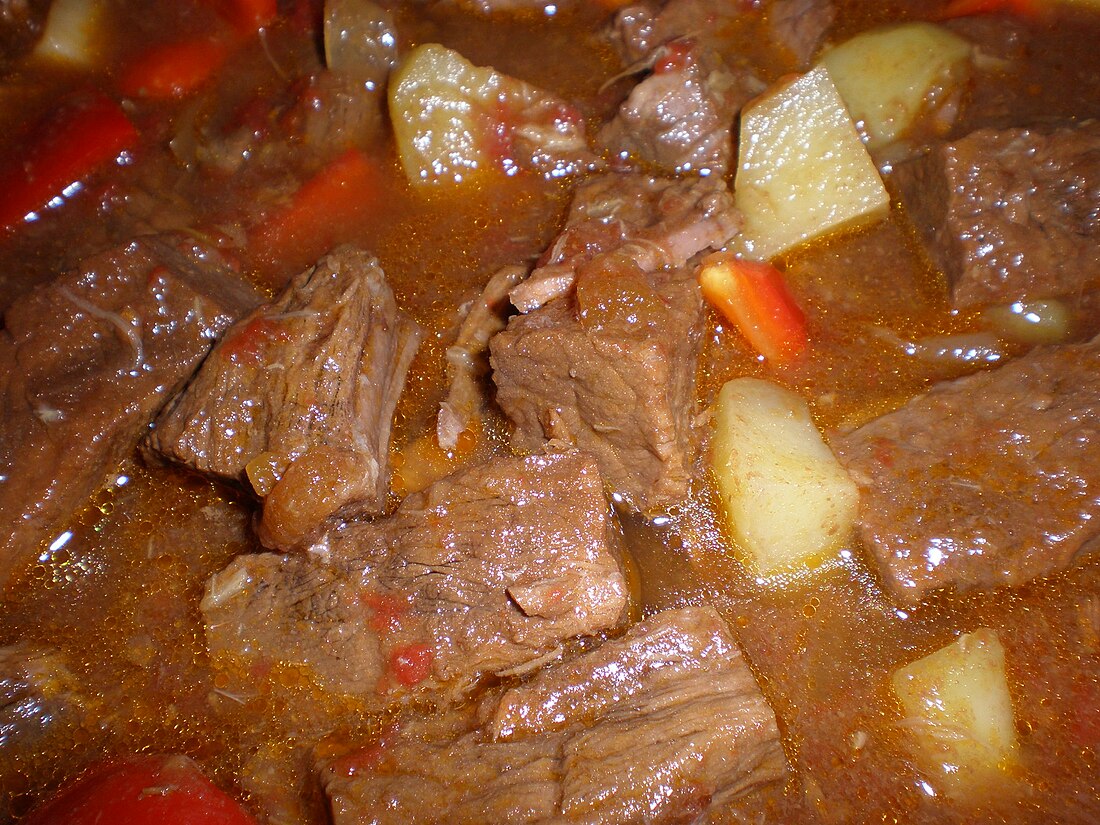Top Qs
Timeline
Chat
Perspective
Mechado
Filipino braised beef dish From Wikipedia, the free encyclopedia
Remove ads
Mechado is a braised beef dish originating from the Philippines inspired by the Mexican dish called Menudo which the Filipinos adopted during the colonial period. Soy sauce and calamansi fruits are key ingredients in the braising liquid.
This article needs additional citations for verification. (January 2022) |
Remove ads
Etymology
The name mechado is derived from the Spanish verb mechar, meaning "to stuff" or, in this case, "to lard", i. e., inserting strips of fatback into the pieces of beef.[1] The term was adopted as mitsa in accordance with Filipino orthographic conventions, though the spelling mitsado for the dish is unorthodox and rarely seen.
Preparation
The traditional version of the dish is done by inserting strips of pork fatback into thick cuts of inexpensive beef (specifically the chuck) to provide both succulence and flavor. The larded beef is then marinated in soy sauce, calamansi, and black pepper. They are then quickly browned on all sides in hot oil and then braised in the marinade with the addition of beef broth, onions, and bay leaves until tender, the liquid reducing to a thick gravy. Fish sauce is often added during the braise as seasoning. The dish can be cooked in tomato sauce in a clay pot.[2]
Over the years, the name of the dish has increasingly come to encompass variations that use thinner slices or even bony cuts of beef and that have dispensed with the larding process altogether. Newer variations of the dish resemble more like a beef stew. A popular incarnation of mechado features tomatoes predominantly in the braising liquid, as well as cuts of potatoes.
The Beef tongue can be similarly treated with little or no variation to produce another dish called lengua mechada.
Remove ads
See also
References
Wikiwand - on
Seamless Wikipedia browsing. On steroids.
Remove ads

